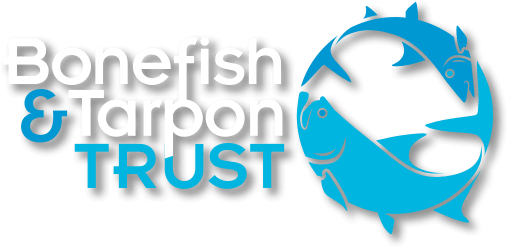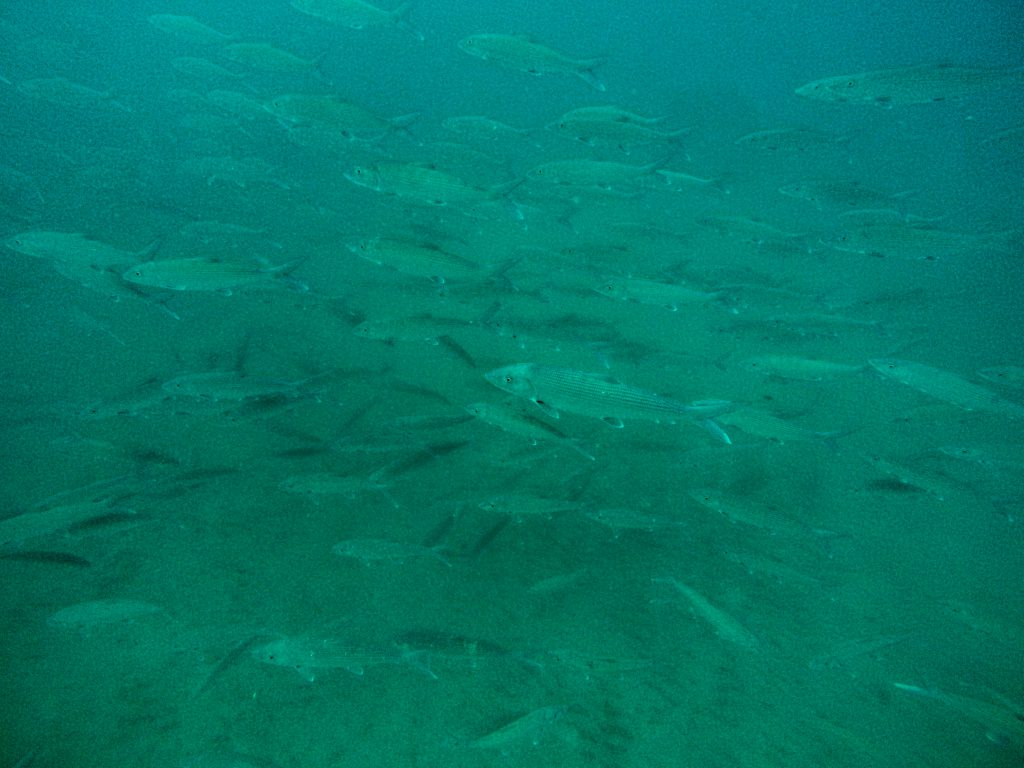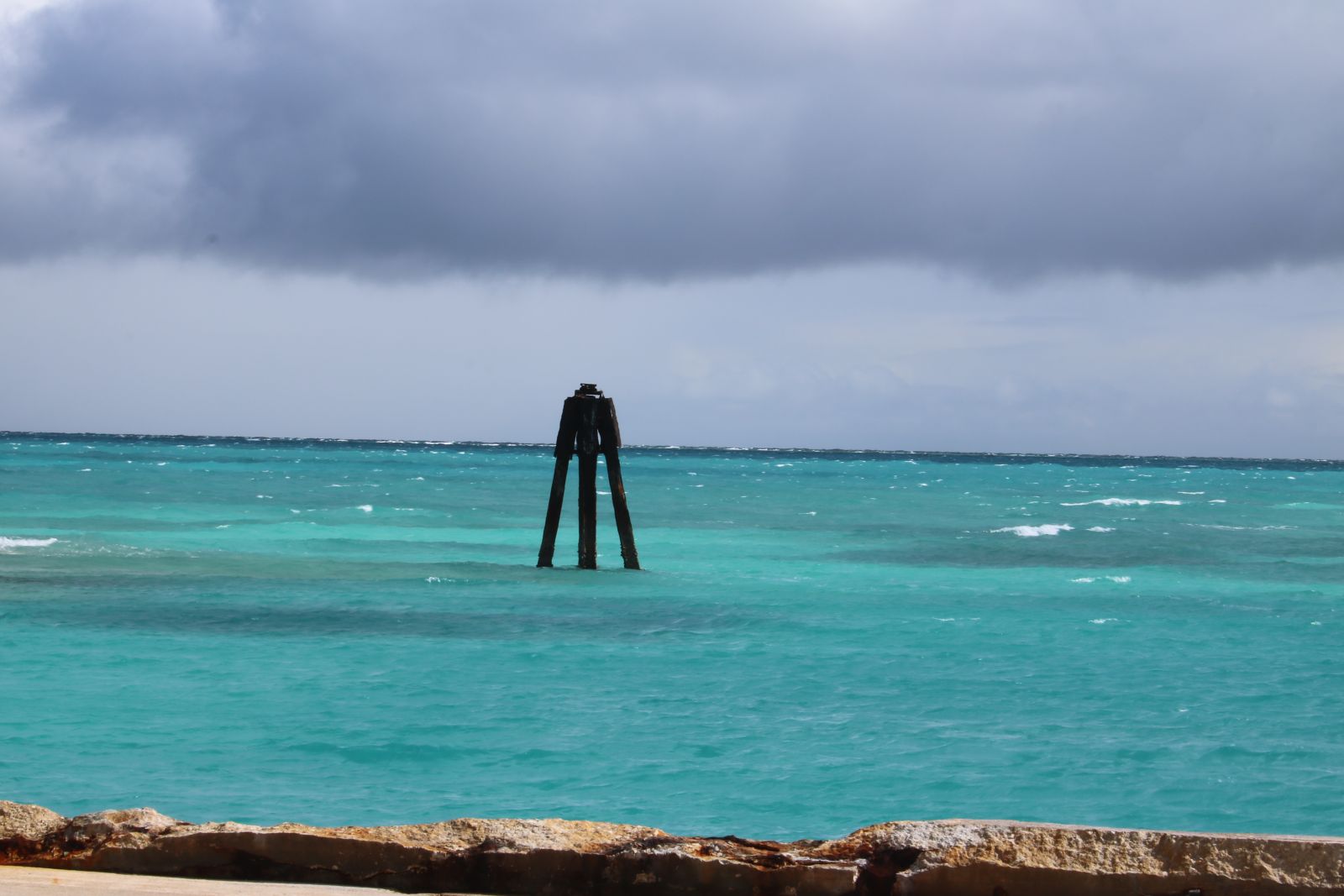 As part of BTT’s efforts to document bonefish spawning locations in the Bahamas and understand the spawning process, a BTT science team traveled to South Andros for the January full moon. This was the team’s second visit to this spawning site, and the trip was once again generously hosted by Bair’s Lodge.
As part of BTT’s efforts to document bonefish spawning locations in the Bahamas and understand the spawning process, a BTT science team traveled to South Andros for the January full moon. This was the team’s second visit to this spawning site, and the trip was once again generously hosted by Bair’s Lodge.
The team arrived prepared for the week ahead, and despite the poor weather – northeast winds 20-25 knots – they were in the skiffs and at the site within an hour of arrival on South Andros. Much to their disappointment, although it was just two days before the full moon, no bonefish were at the site. The team searched nearby areas, but found no large schools of bonefish.
The next morning, the team left the lodge early in the morning, arriving at the site soaked from the heavy seas. And again, no bonefish were anywhere to be found. The team searched the surrounding area again, and waited all day for bonefish that never arrived. The mood that evening at dinner was a bit somber, and conversations tense.
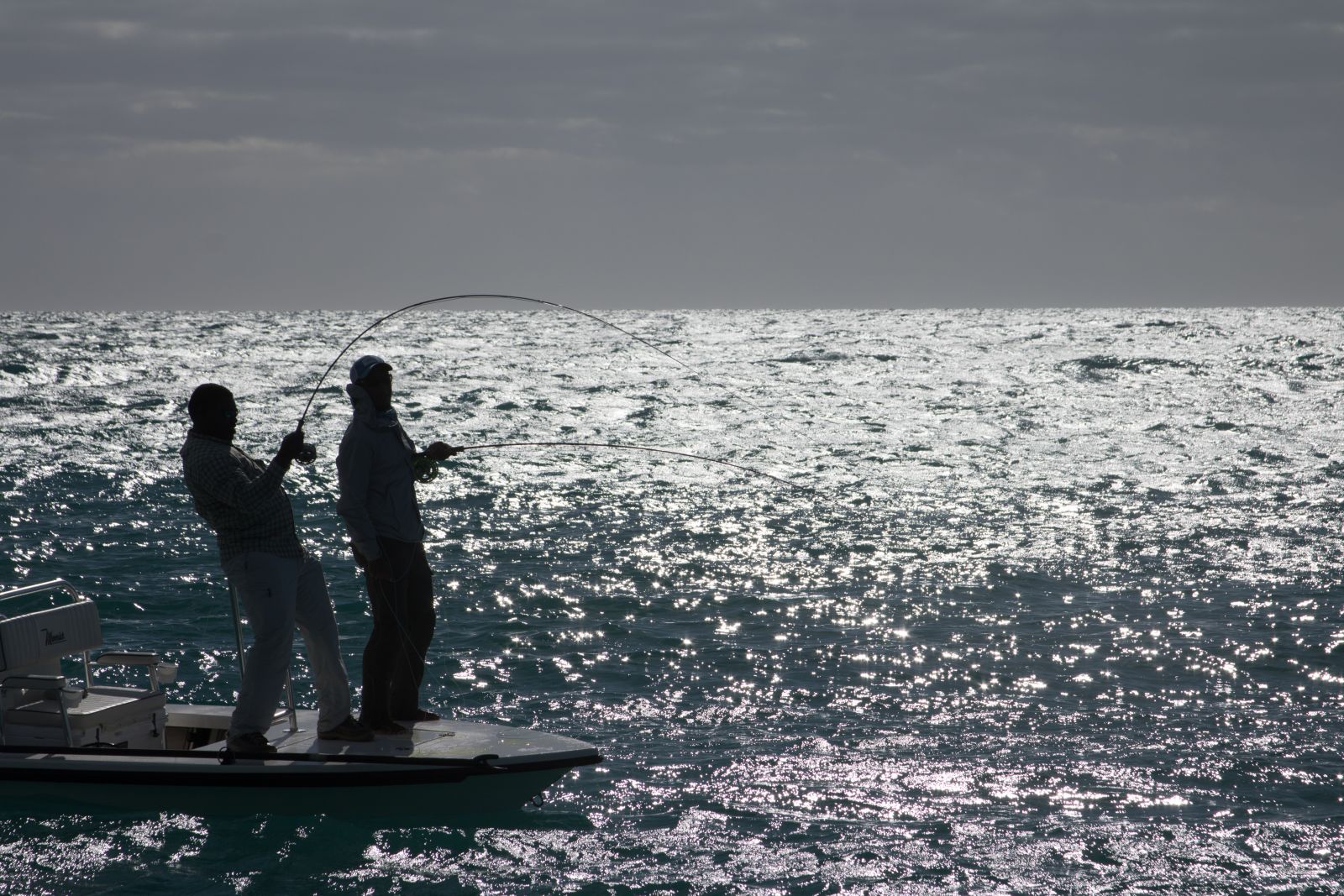 Day three came around, and with it another early start and high hopes. The first skiff to the site reported the good news – a large school of bonefish had arrived at the site the previous night. It was January 12, the day of the full moon, and it was on. For the next four days, the BTT team studied and sampled the pre-spawning schools of bonefish.
Day three came around, and with it another early start and high hopes. The first skiff to the site reported the good news – a large school of bonefish had arrived at the site the previous night. It was January 12, the day of the full moon, and it was on. For the next four days, the BTT team studied and sampled the pre-spawning schools of bonefish.
They dart-tagged bonefish to learn from where and how large of an area the bonefish travel to this spawning site. When anglers catch bonefish on the flats, they are catching them in their home ranges. When an angler catches a bonefish later that was tagged at the spawning site, we learn how far the bonefish migrated from home range to get to the spawning site. On Abaco, BTT has documented round-trip migrations of 140 miles. So far on South Andros, the longest has been 100 miles round-trip. That’s a long way for fish that typically have a home range of under a mile, and the more we learn about where they are coming from, the better equipped we will be to provide guidance on proper management of the fishery.
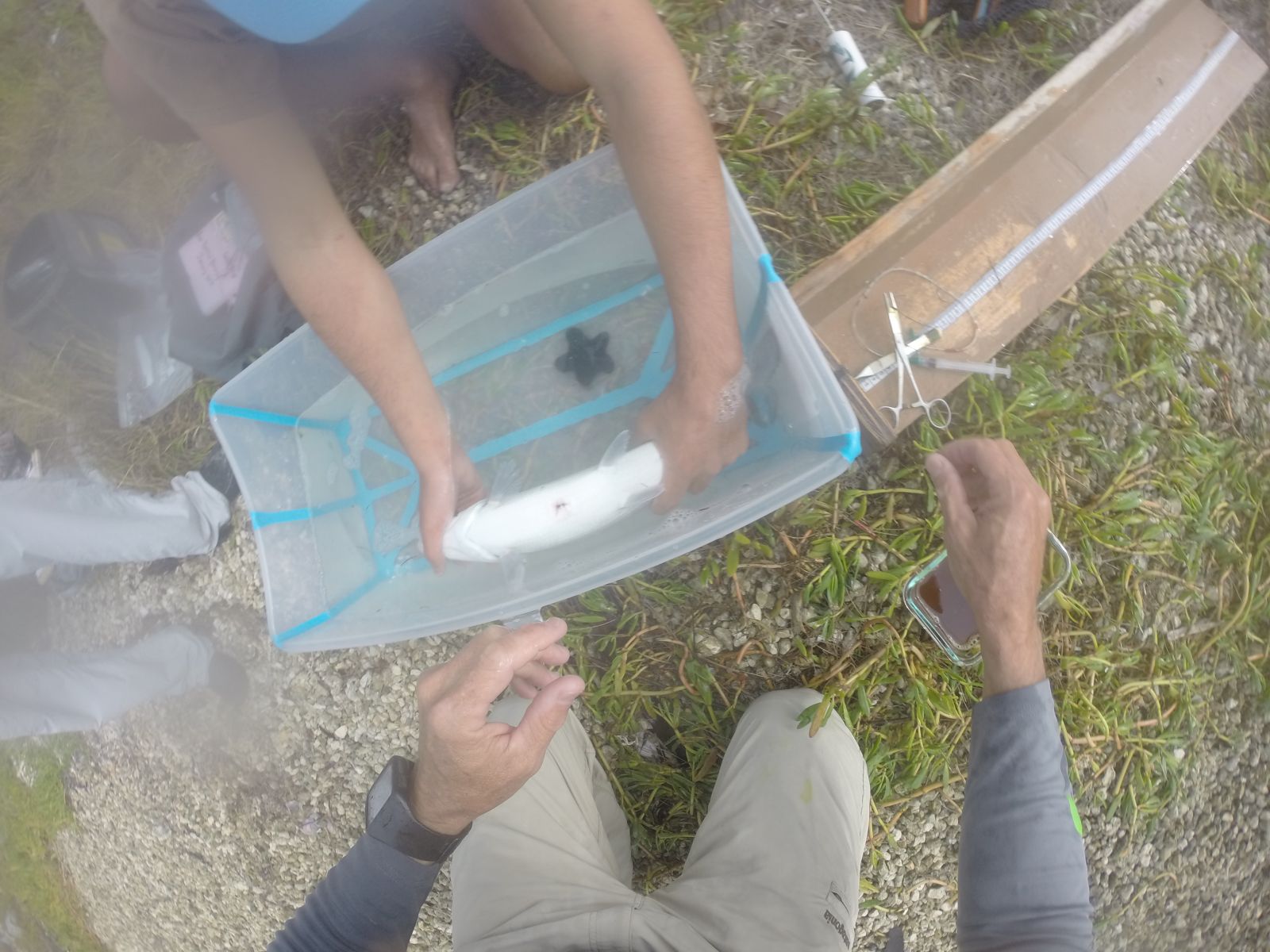 During the trip, the team also implanted acoustic tags in 10 bonefish. With an acoustic receiver at the spawning site, we will be able to determine how often bonefish return during the spawning season (which spans from October to April), and if they return to the same site every year.
During the trip, the team also implanted acoustic tags in 10 bonefish. With an acoustic receiver at the spawning site, we will be able to determine how often bonefish return during the spawning season (which spans from October to April), and if they return to the same site every year.
In addition to tagging, the team also sampled the female bonefish to better understand the intricacies of egg development and spawning, and temporarily held some bonefish in captivity to observe behaviors associated with spawning. Much was learned in the intensive seven day trip that will be applied to fisheries management and BTT’s efforts to spawn and raise bonefish in captivity.
Many thanks to Bair’s Lodge for supporting this research.
